Exploring ways to integrate cleantech into the landscape.
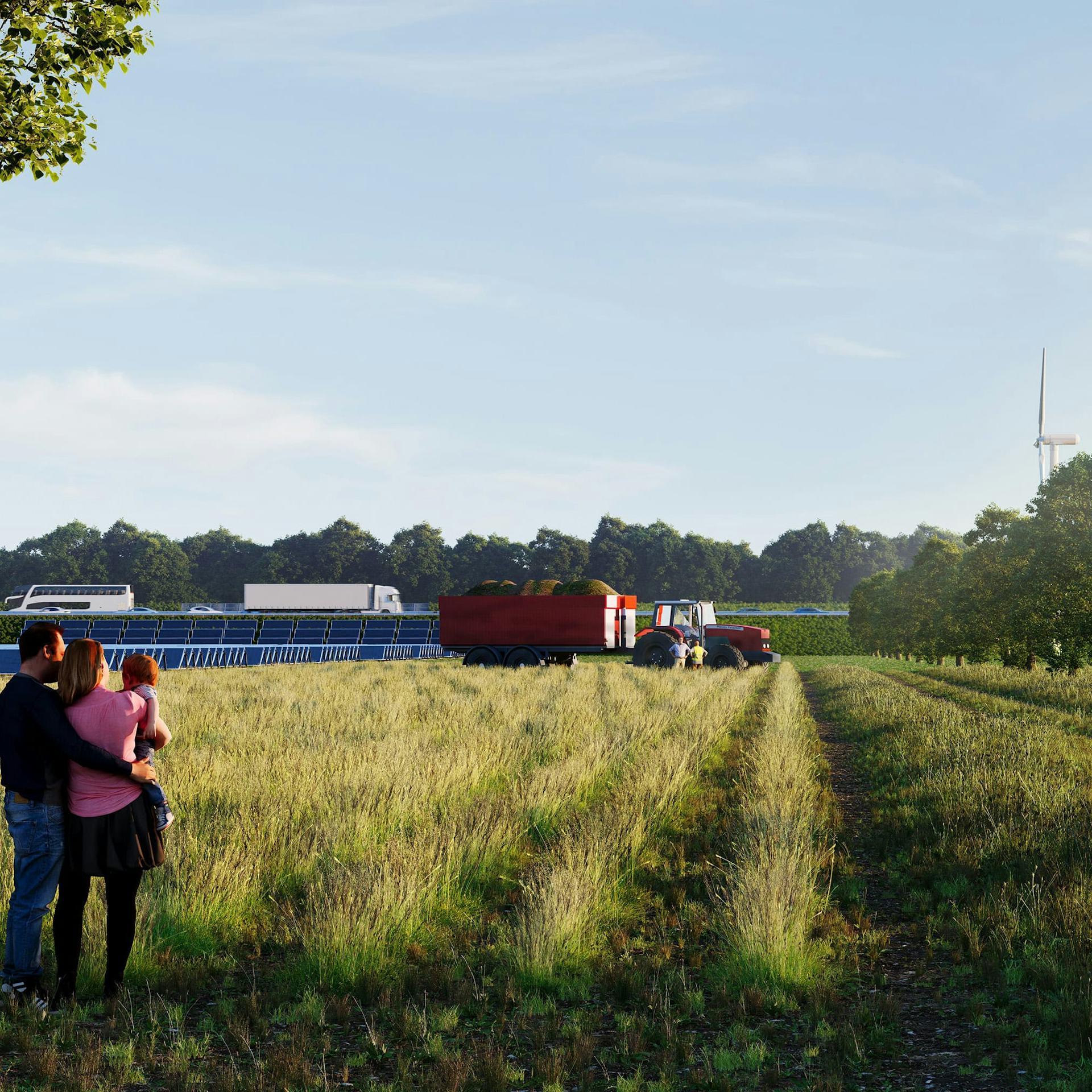
Cleantech A1-zone The Stedendriehoek, consisting of Apeldoorn, Deventer, and Zutphen, is known as the Cleantech Region. Cleantech represents collective efforts towards a cleaner future, with a focus on energy transition, climate adaptation, sustainable mobility, attractive living environments, balanced natural habitats, and sustainable economic opportunities. These efforts will inevitably change the landscape, but at the same time, the region values the existing spatial qualities, high biodiversity, and unique landscape experience, including heritage, villages, and towns.
"Strengthening the green landscape with contemporary innovations without concealing the essence of natural beauty."
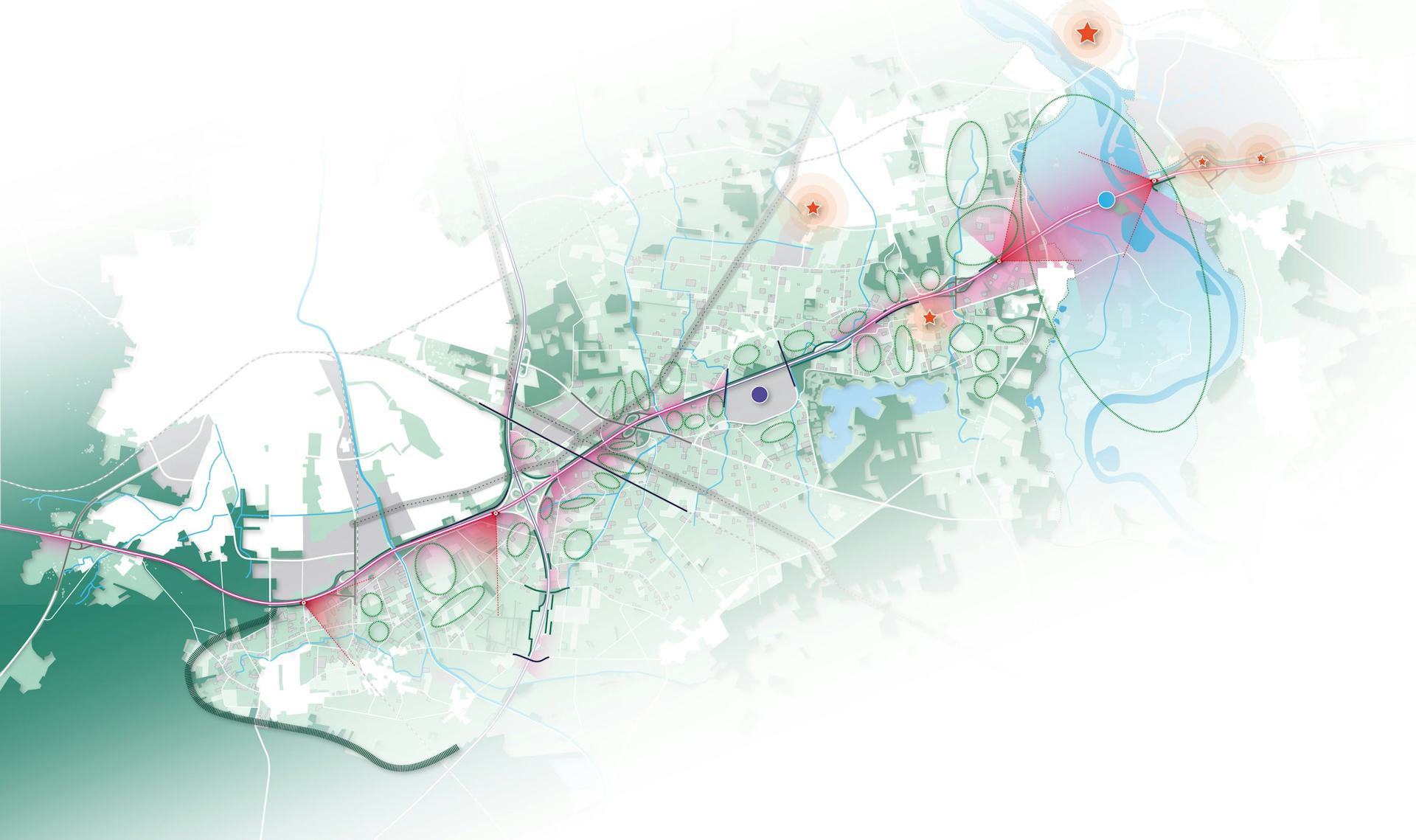
The planned expansion of the A1 highway in the next 10 years is seen as an opportunity to rapidly and coherently realize the region's ambitions in a broad zone on both sides of the highway. In collaboration with Gelders Genootschap, we have worked on a spatial quality map that provides direction and inspiration for the assessment of initiatives with spatial impact within the Cleantech A1-zone.
The green character of the region is under pressure due to urbanization and new forms of energy extraction.
The map highlights both elements to be preserved and opportunities for landscape enhancement and energy transition. This 'map' serves as a communication tool to inspire further discussion and provide direction for future spatial considerations. The result is a toolbox of instruments that can be applied in the further development of projects and challenges in the area. We provide initiators with the necessary means to get started. Additionally, the map emphasizes some area-specific design challenges that can be addressed in collaboration with government agencies and other partners.
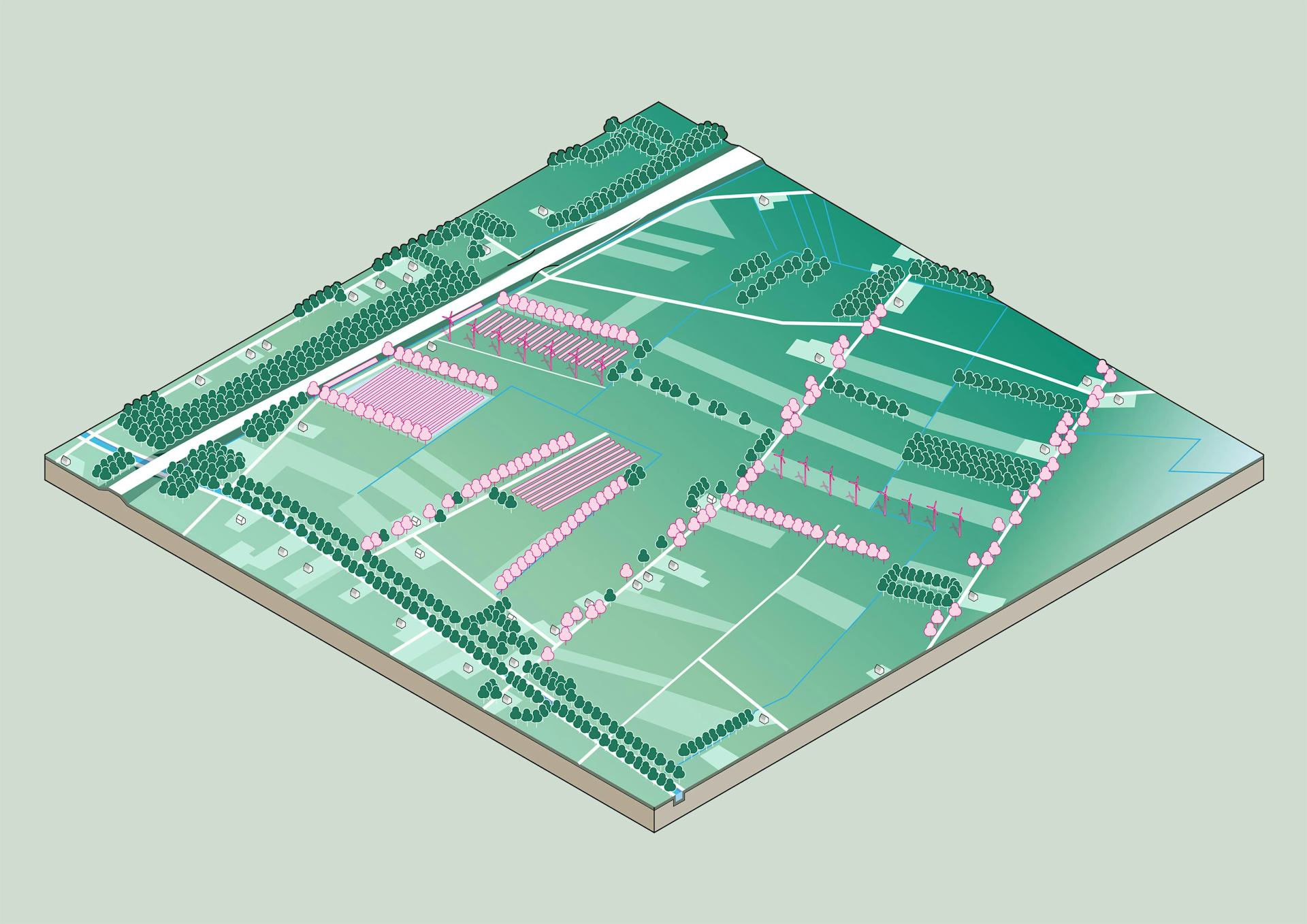
Fields and ridges The goal is to restore the small-scale chamber structure in the landscape, using road planting, field edges, courtyard planting, and more. We aim to maintain the relative openness of the ridges and develop wet structures such as the Fliert, the Groote Wetering, and possibly the Twellose Beek into natural corridors suitable for hiking and cycling. Creating smooth passages over the A1 and the Zutphensestraat is of great importance in this regard. Subsequently, small-scale paths can be created along fields to connect the landscape with these corridors.
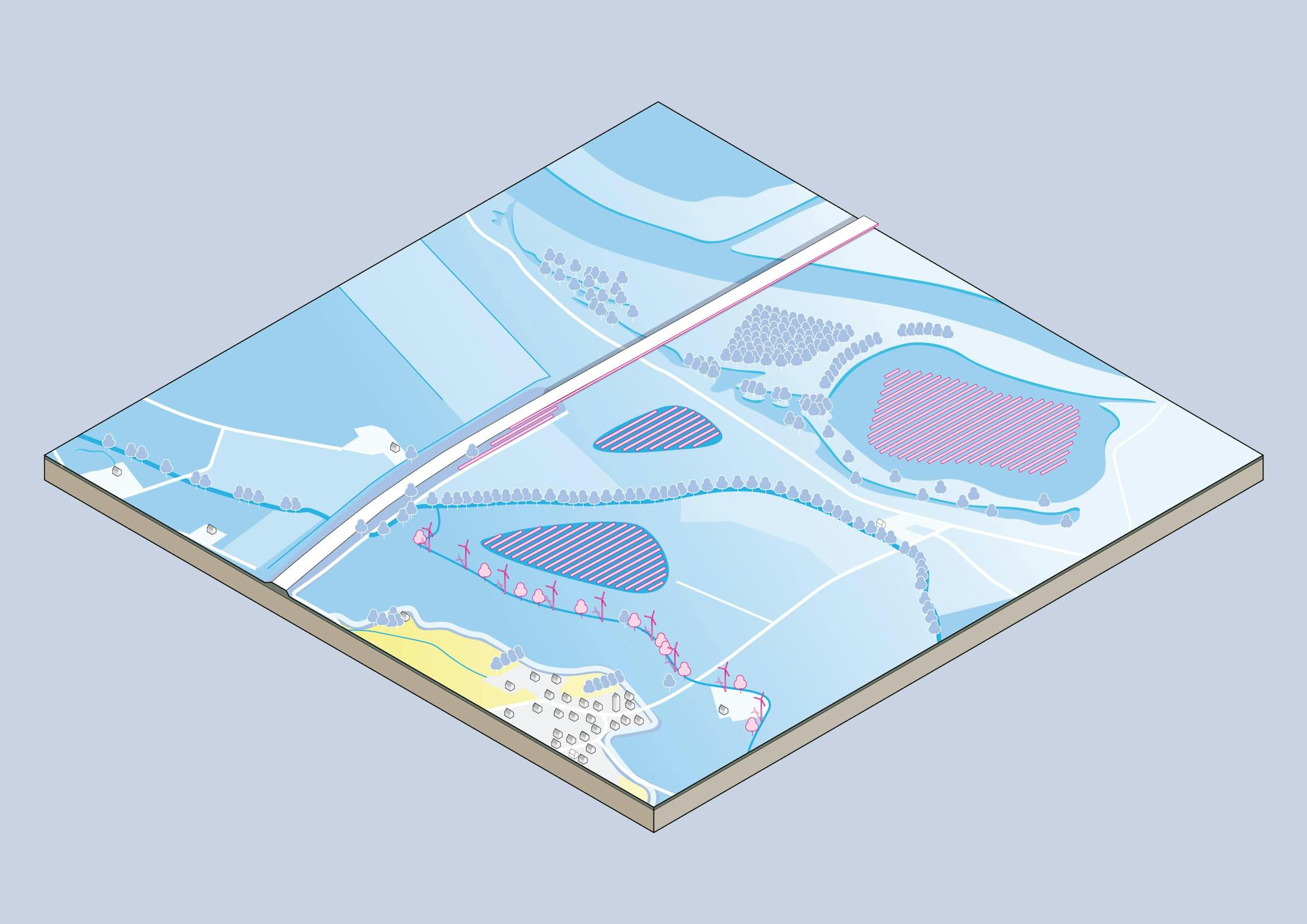
The IJssel and floodplains Landscape enhancement can increase the capacity for energy generation. Planting along river ridges and river strands is possible as long as the distant views are preserved. Courtyard planting and clumps can also be emphasized. In terms of energy generation, the focus is initially on harnessing water dynamics. Within the landscape, a few larger, potentially floating solar fields may be suitable. Large inland wind turbines are not desirable in any case."
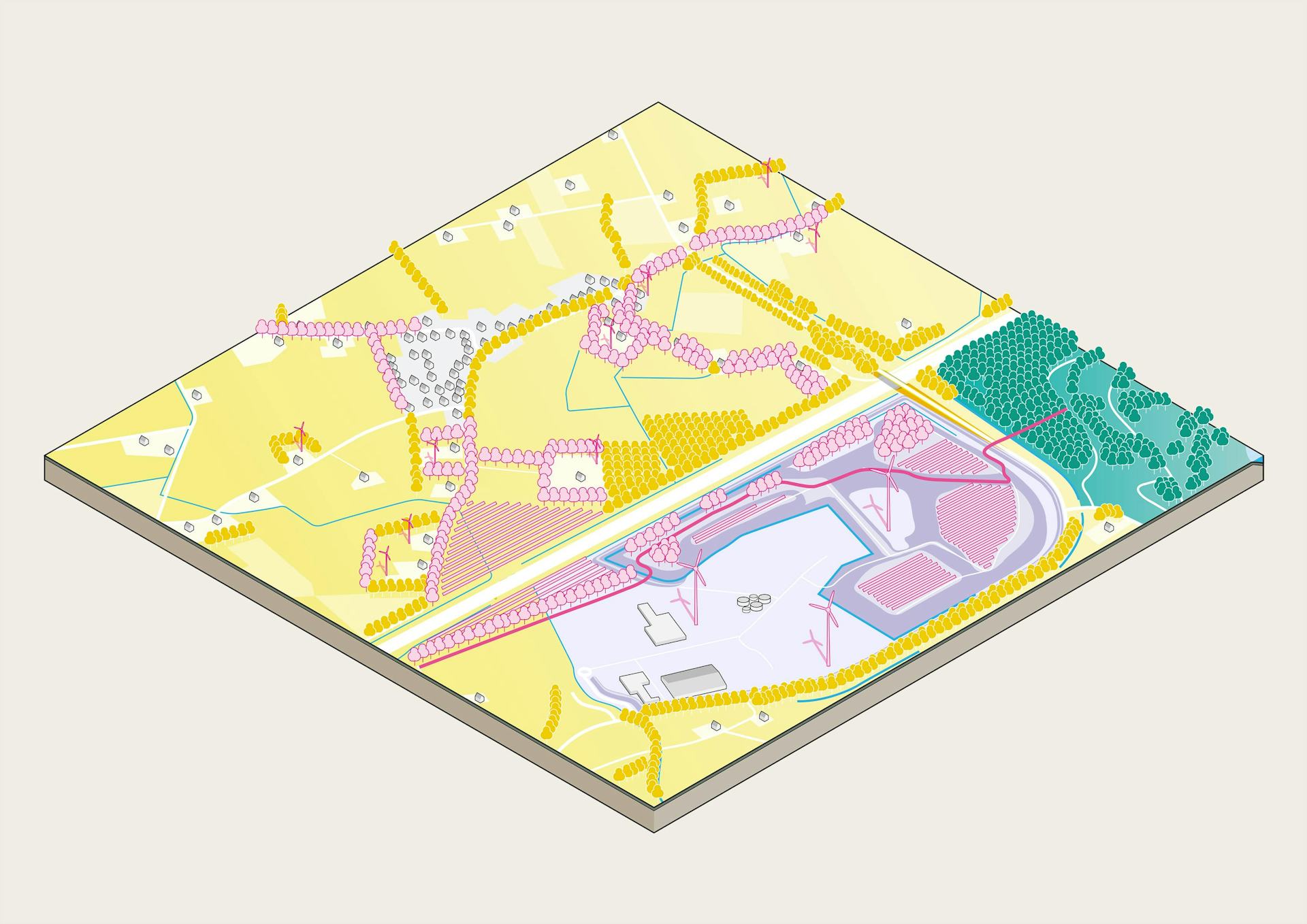
Peat and heathland reclamations The regular pattern of these landscapes offers good starting points for landscape enhancement. Long lines of roads and field edges are accentuated with rows of trees. Planting follows the reclamation patterns. Long vistas are retained to avoid a closed chamber structure. Developed homesteads are adorned with courtyard planting. Rectangular, bordered plots can be arranged as solar meadows. In larger peat landscapes, wind farms are conceivable, placed in the regular pattern of the landscape.
"Incorporating energy production offers opportunities for strengthening the landscape, especially in places where the landscape has lost its strength."
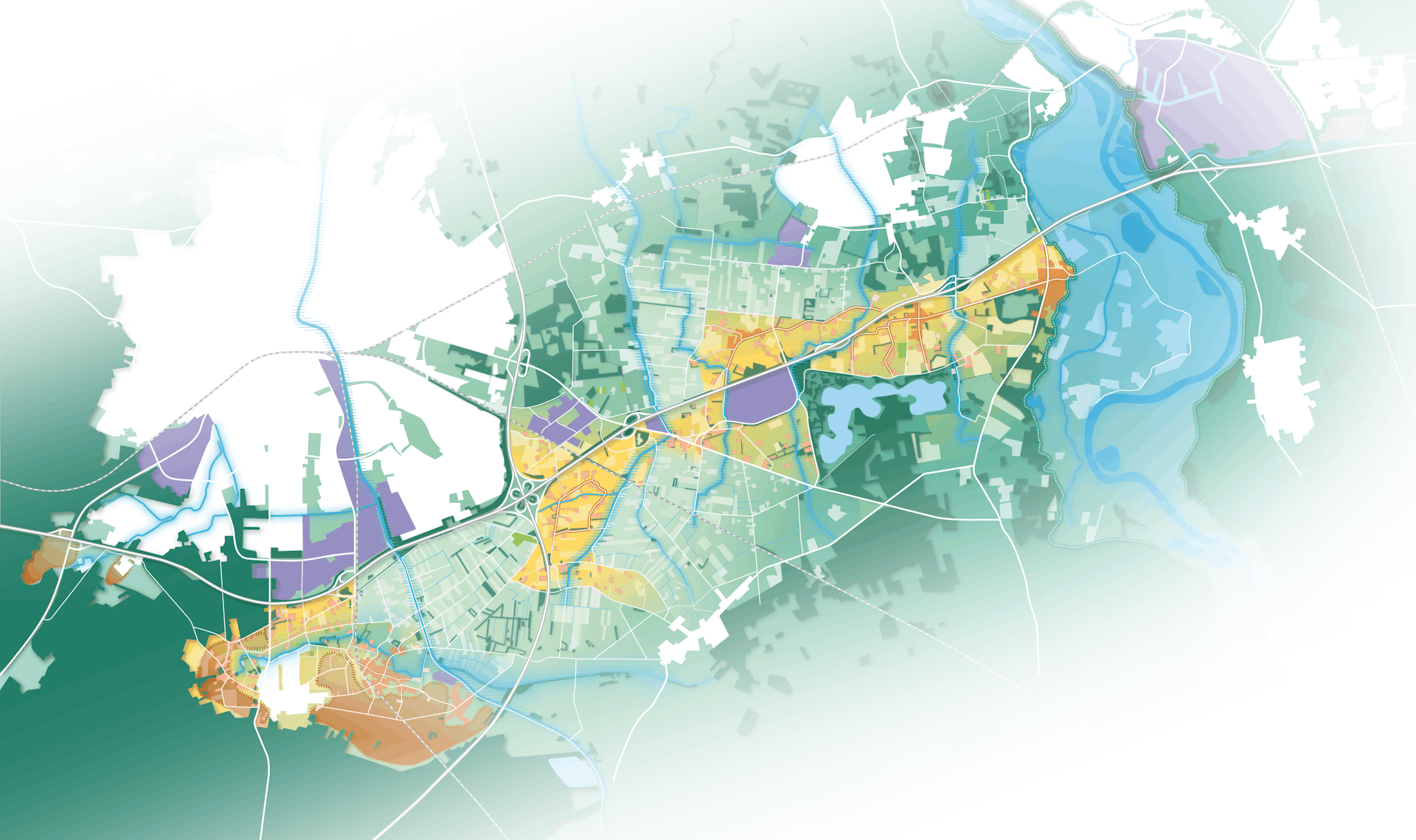
Challenges to Preserving the Region's Green Landscape Character
That is why we want to make the landscape shell stronger and bring more variation back into the landscape. By doing this, the absorption capacity of the landscape for energy extraction is increased and we simultaneously invest in the core values. The intention is certainly not to hide cleantech measures in the landscape.
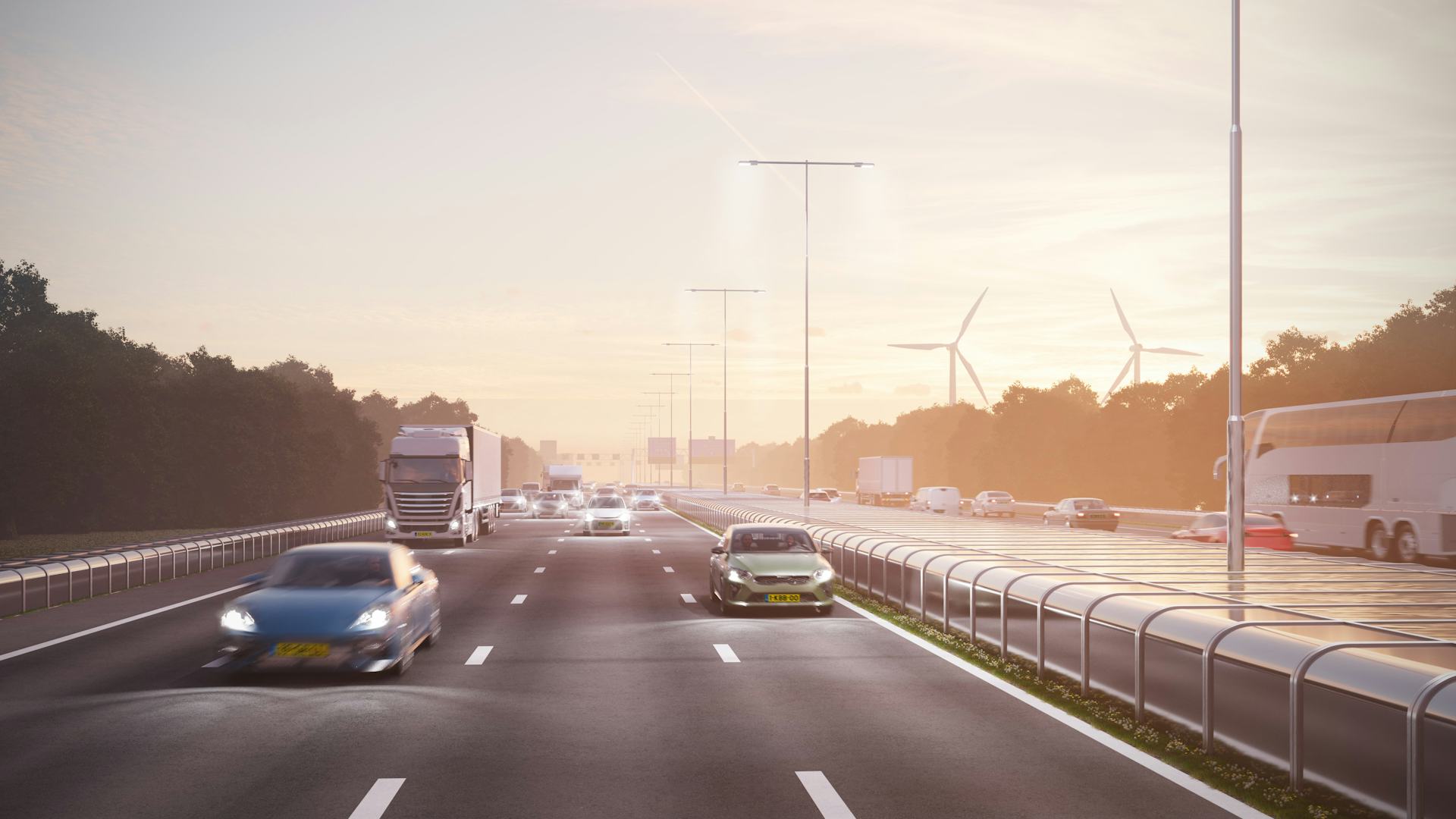
For the A1 highway, the goal is to maintain and further develop the mentioned landscape qualities. The impact of roadside furniture on the experience is minimized to ensure optimal views of the surroundings. Green structures and energy generation facilities along the road are designed as part of the adjacent landscape.
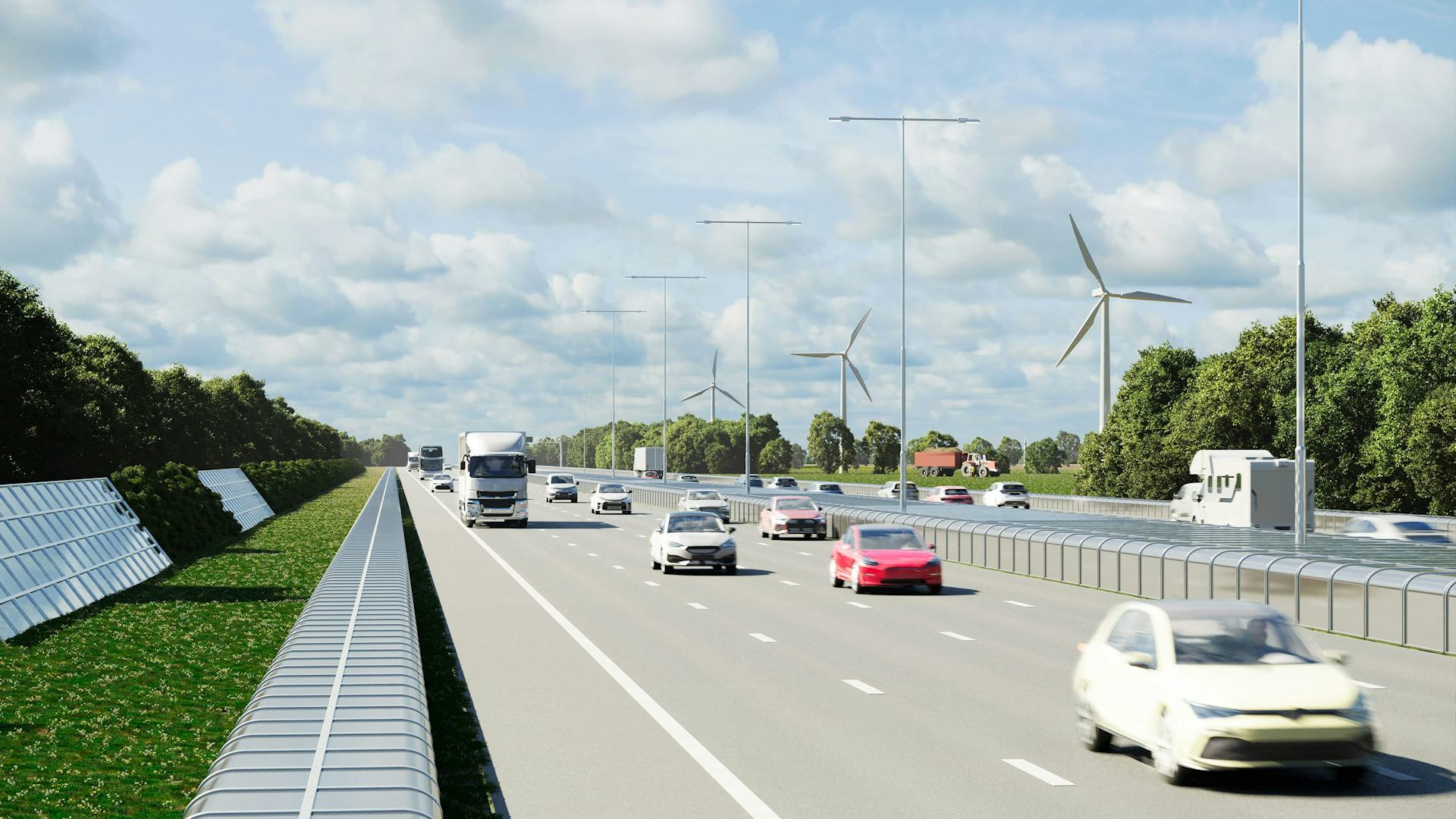
"In the Cleantech A1 zone - collaboration for a cleaner future, emphasizing landscape preservation, energy transition, and sustainable development, while seeing the planned A1 expansion as an opportunity to unite these goals."
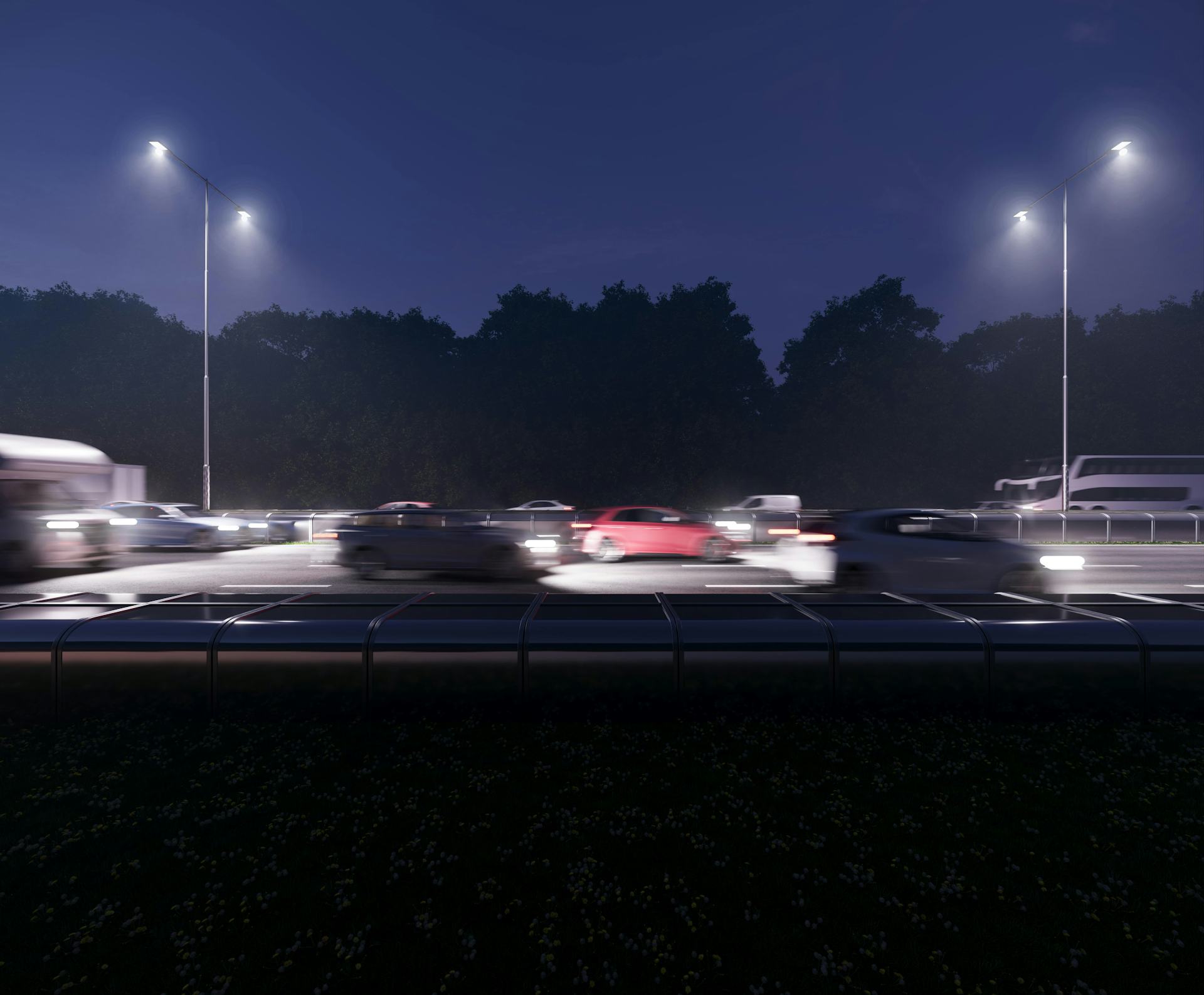
In the center median and along the road shoulders, there's room for the installation of transparent solar panels.
Their impact on road aesthetics and visibility is minimal, particularly when the highway is elevated, which benefits the environment by reducing noise pollution and obscuring the view of road traffic. Solar panels in the median barrier serve to dampen noise near its source. Notably, no panels are positioned in critical sight lines, but they are strategically placed to align with areas where shrubs intersect the road. Additionally, the color scheme can be customized as needed.
